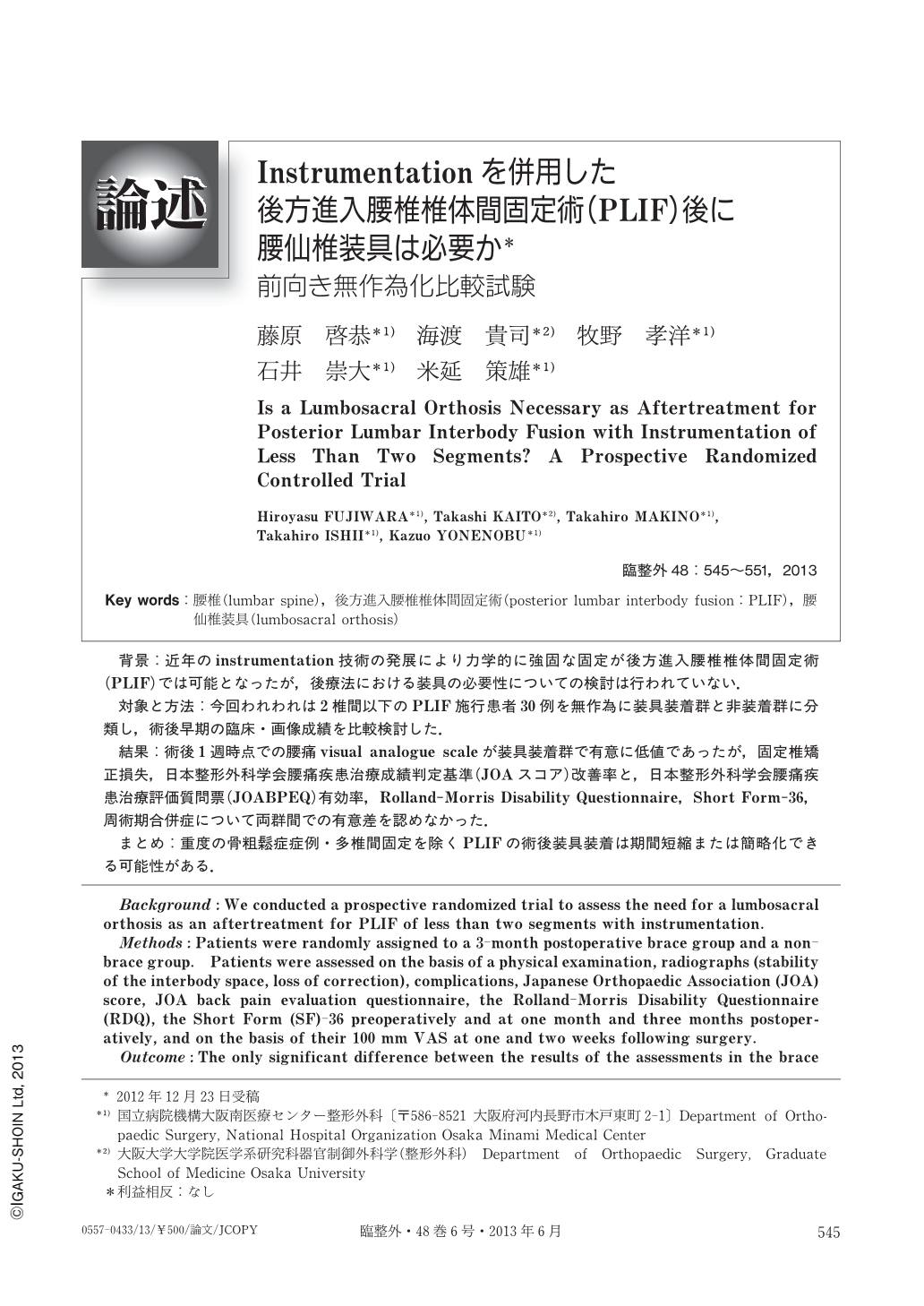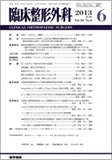Japanese
English
- 有料閲覧
- Abstract 文献概要
- 1ページ目 Look Inside
- 参考文献 Reference
背景:近年のinstrumentation技術の発展により力学的に強固な固定が後方進入腰椎椎体間固定術(PLIF)では可能となったが,後療法における装具の必要性についての検討は行われていない.
対象と方法:今回われわれは2椎間以下のPLIF施行患者30例を無作為に装具装着群と非装着群に分類し,術後早期の臨床・画像成績を比較検討した.
結果:術後1週時点での腰痛visual analogue scaleが装具装着群で有意に低値であったが,固定椎矯正損失,日本整形外科学会腰痛疾患治療成績判定基準(JOAスコア)改善率と,日本整形外科学会腰痛疾患治療評価質問票(JOABPEQ)有効率,Rolland-Morris Disability Questionnaire,Short Form-36,周術期合併症について両群間での有意差を認めなかった.
まとめ:重度の骨粗鬆症症例・多椎間固定を除くPLIFの術後装具装着は期間短縮または簡略化できる可能性がある.
Background:We conducted a prospective randomized trial to assess the need for a lumbosacral orthosis as an aftertreatment for PLIF of less than two segments with instrumentation.
Methods:Patients were randomly assigned to a 3-month postoperative brace group and a non-brace group. Patients were assessed on the basis of a physical examination, radiographs (stability of the interbody space, loss of correction), complications, Japanese Orthopaedic Association (JOA) score, JOA back pain evaluation questionnaire, the Rolland-Morris Disability Questionnaire (RDQ), the Short Form (SF)-36 preoperatively and at one month and three months postoperatively, and on the basis of their 100 mm VAS at one and two weeks following surgery.
Outcome:The only significant difference between the results of the assessments in the brace group and the non-brace group was in the 1-week postoperative VAS score higher in the non-brace group (p<0.05). The effectiveness of wearing the orthosis was limited to short-term pain relief after surgery.
Conclusion:These findings suggest that it may be possible to omit or shorten the period of orthosis use except after multi-segmental fusion and in patients with severe osteoporosis.

Copyright © 2013, Igaku-Shoin Ltd. All rights reserved.


